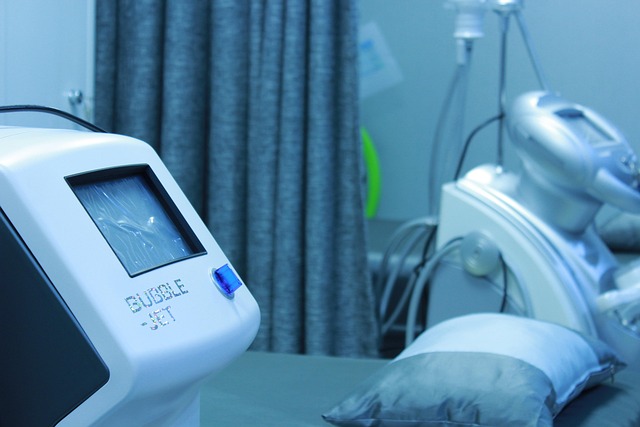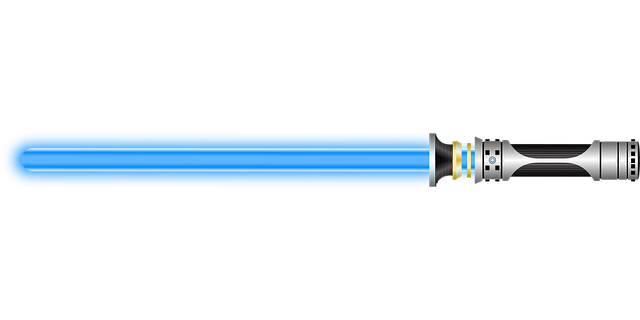Skin tags, benign collagen fiber overgrowth common in certain populations, can be removed through laser skin tag removal procedures or RF treatments. Lasers offer quick, painless results with minimal downtime, while RF is gentler and suitable for smaller tags. Choosing the best method depends on tag size, sensitivity, and desired outcome, emphasizing the role of professional expertise for successful laser skin tag removal.
Skin tags, those tiny, harmless growths on the neck or armpits, can be a nuisance. If you’re considering removal, you might be wondering about laser vs radiofrequency treatments. This guide delves into these two popular methods for addressing persistent skin tags. We explore how laser skin tag removal works, its benefits, and the science behind radiofrequency ablation. By comparing advantages and considerations, we aim to empower you with knowledge for making an informed decision regarding the best laser skin tag removal procedure for your needs.
- Understanding Skin Tags: Causes and Characteristics
- Laser Skin Tag Removal: How It Works and Benefits
- Radiofrequency for Skin Tags: Procedure and Effectiveness
- Comparing Methods: Advantages and Considerations
Understanding Skin Tags: Causes and Characteristics

Skin tags, also known as acrochordons, are small, soft flesh-coloured growths that typically appear on the neck, armpits, and groin area. They are generally harmless but can be a source of discomfort or self-consciousness for many individuals. These skin tags develop when collagen and other fibres in the skin overgrow, forming a tiny tag that dangles from the surface.
The causes of skin tags include genetics, hormonal changes, obesity, friction, and ageing. They are more common in certain populations, especially those with a family history of skin tags or specific genetic conditions. Often, they first appear during childhood or adolescence and can continue to form throughout adulthood. Skin tags usually do not require treatment unless they cause pain, itchiness, or embarrassment. Individuals seeking laser skin tag removal procedures, such as those at a London skin tag clinic or affordable options near them, like in Preston, often do so for cosmetic reasons or to remove tags that have become irritated or unsightly.
Laser Skin Tag Removal: How It Works and Benefits

The laser skin tag removal procedure is a highly effective method for eliminating unwanted skin tags. During this treatment, a concentrated beam of light is directed at the skin tag, targeting its blood supply and causing it to shrink or fall off. This precise and targeted approach offers several benefits over traditional methods like cutting or burning. Unlike home remedies for stubborn skin tags that may be painful or ineffective, lasers provide a quick, relatively painless experience with minimal downtime.
One of the key advantages of laser skin tag removal is its ability to address multiple tags in a single session, making it a cost-efficient solution. Non-ablative lasers, in particular, are known for their safety and suitability for various skin types, making them a popular choice for many seeking professional skin tag removal services, such as those available in Doncaster or other areas. This advanced technology ensures that the surrounding healthy skin is unharmed while effectively removing the unwanted skin tags.
Radiofrequency for Skin Tags: Procedure and Effectiveness

Radiofrequency (RF) treatment for skin tags involves using high-frequency energy to heat and destroy the small blood vessels that supply the tag, causing it to fall off. This non-invasive procedure is typically performed in a clinical setting by a qualified healthcare professional. During the treatment, a fine needle or probe emits RF energy directly into the skin tag, targeting the collagen and elastin fibres, which support the skin’s structure. As a result, the tag shrinks and eventually falls away over a few days to weeks.
RF skin tag removal has shown promising results for those seeking an alternative to laser treatments. It is generally considered safe and effective, especially for smaller or more superficial tags. Some advantages include minimal downtime, less pain compared to lasers, and no risk of burns or blisters. However, it might not be suitable for larger or deeply anchored skin tags, as the energy penetration may be insufficient. For best outcomes, individuals interested in this method should consult specialized clinics like those in Wolverhampton, Gloucester, or Bradford, where expert practitioners can assess and treat skin tags accordingly.
Comparing Methods: Advantages and Considerations

When comparing laser vs radiofrequency for skin tag removal, each method offers unique advantages. Laser skin tag removal procedures use targeted light energy to destroy the skin tag’s blood supply, leading to faster and often permanent results. This non-invasive approach is effective for various skin tones and types, making it a popular choice for many seeking permanent solutions. However, lasers might cause temporary redness or swelling, and multiple treatments could be required, especially for larger tags.
On the other hand, radiofrequency (RF) devices emit electromagnetic waves to heat up and destroy the skin tag tissue. RF is considered safer for sensitive areas due to its deeper penetration and controlled heating. While it may not offer permanent results as consistently as lasers, it’s an excellent option for those with smaller, more superficial tags. Skin tag removal laser reviews often highlight their effectiveness, while some prefer RF for its gentler approach, especially in private clinics like those found in Gloucester. When choosing the right laser clinic, consider professional expertise and patient comfort, ensuring a safe and successful skin tag removal experience.
When deciding between laser and radiofrequency treatments for persistent skin tags, each method offers unique advantages. Laser skin tag removal is highly effective with minimal downtime, making it a popular choice. Radiofrequency, on the other hand, is a gentle, non-invasive option with fewer potential side effects. The best approach depends on individual preferences and skin concerns. Consulting a dermatologist can help determine which procedure aligns best with your goals for clear, healthy skin.
